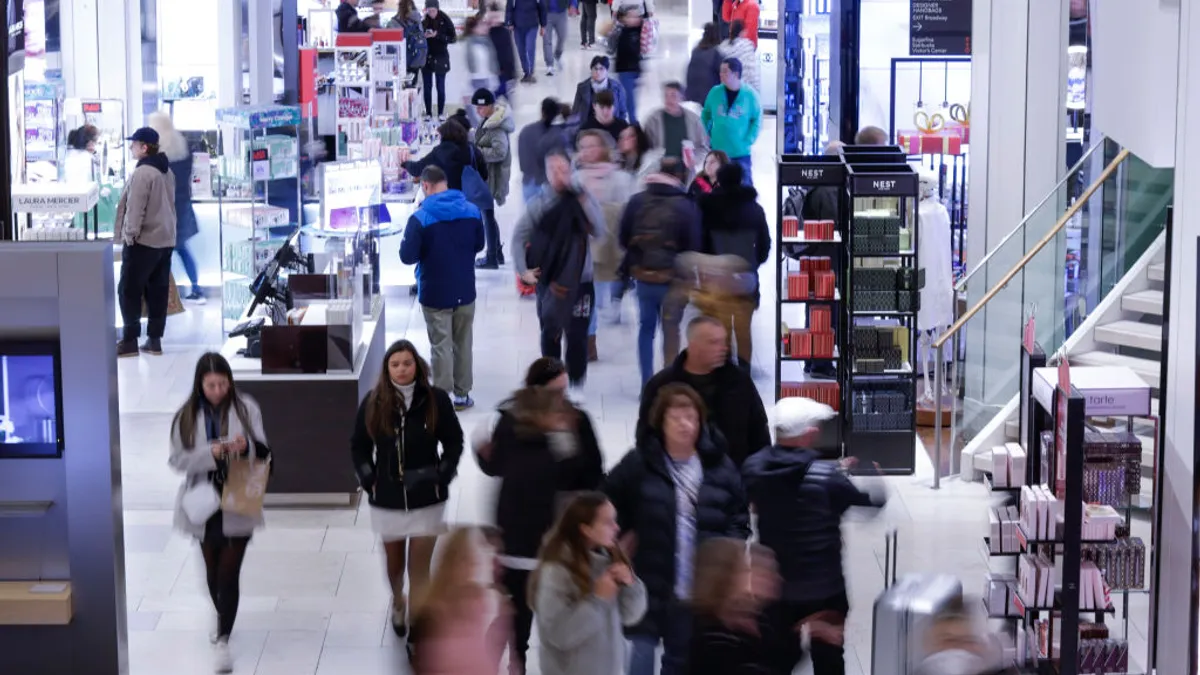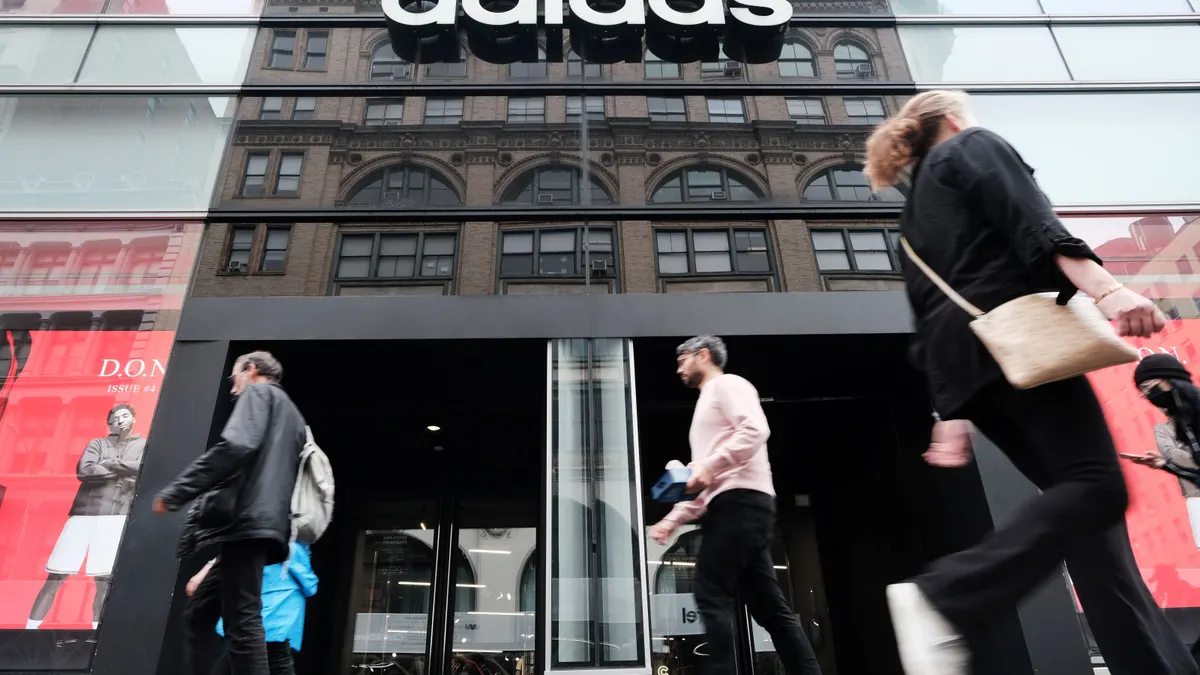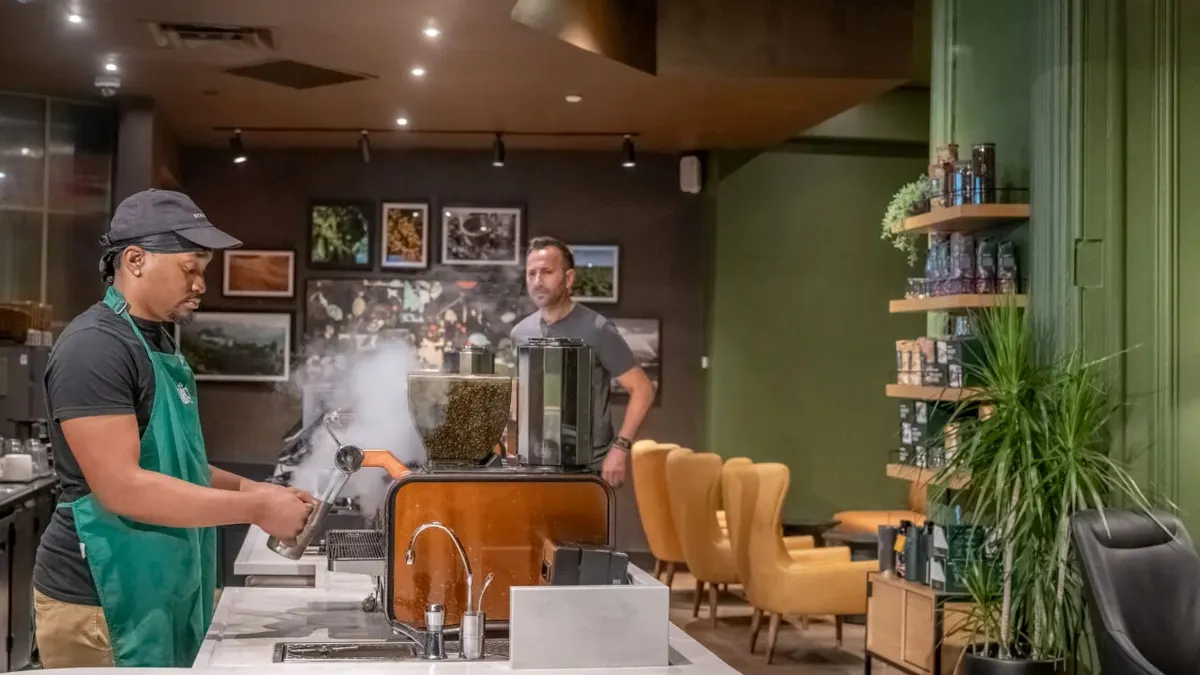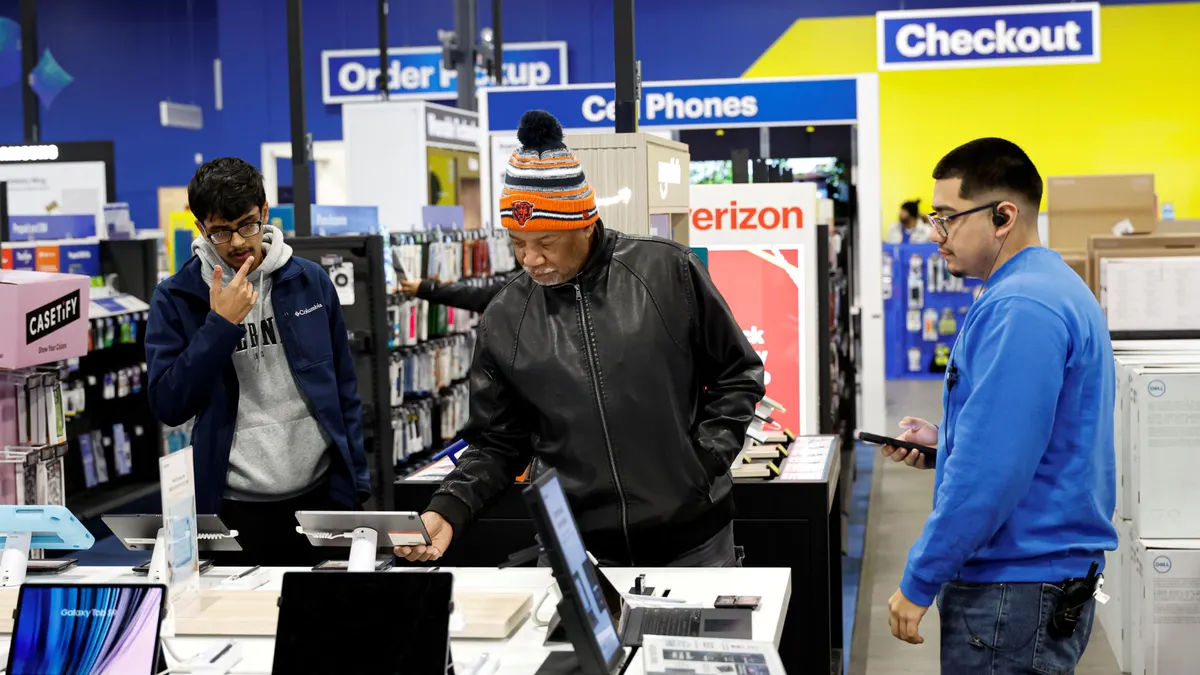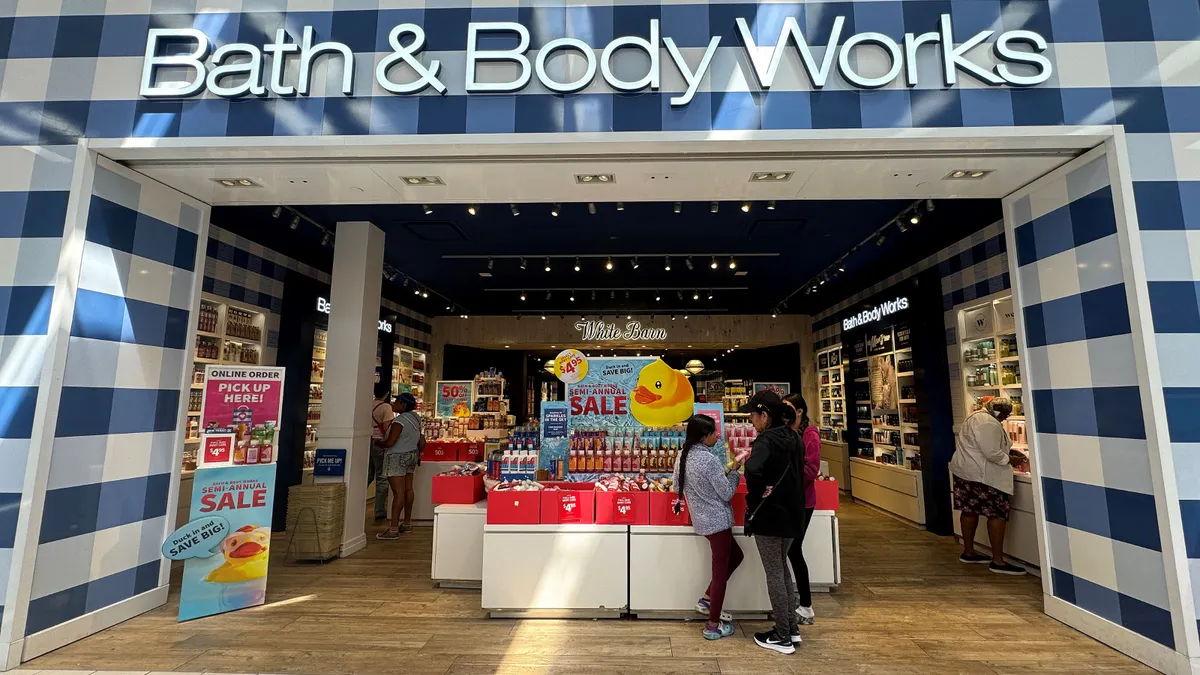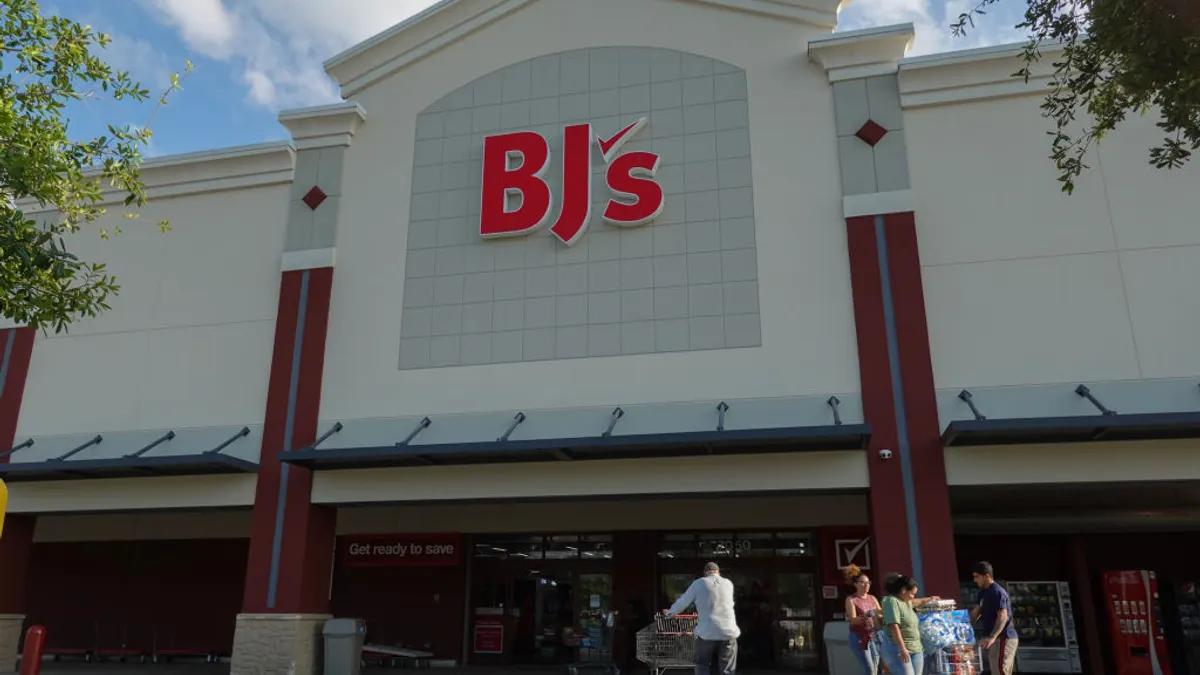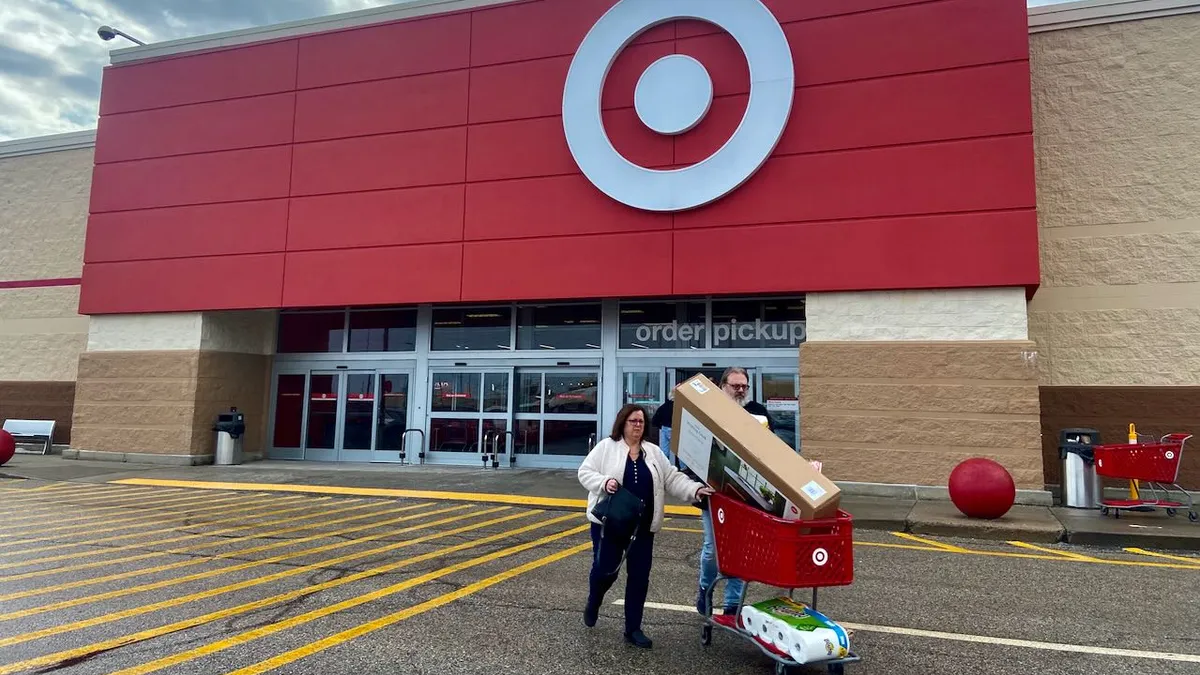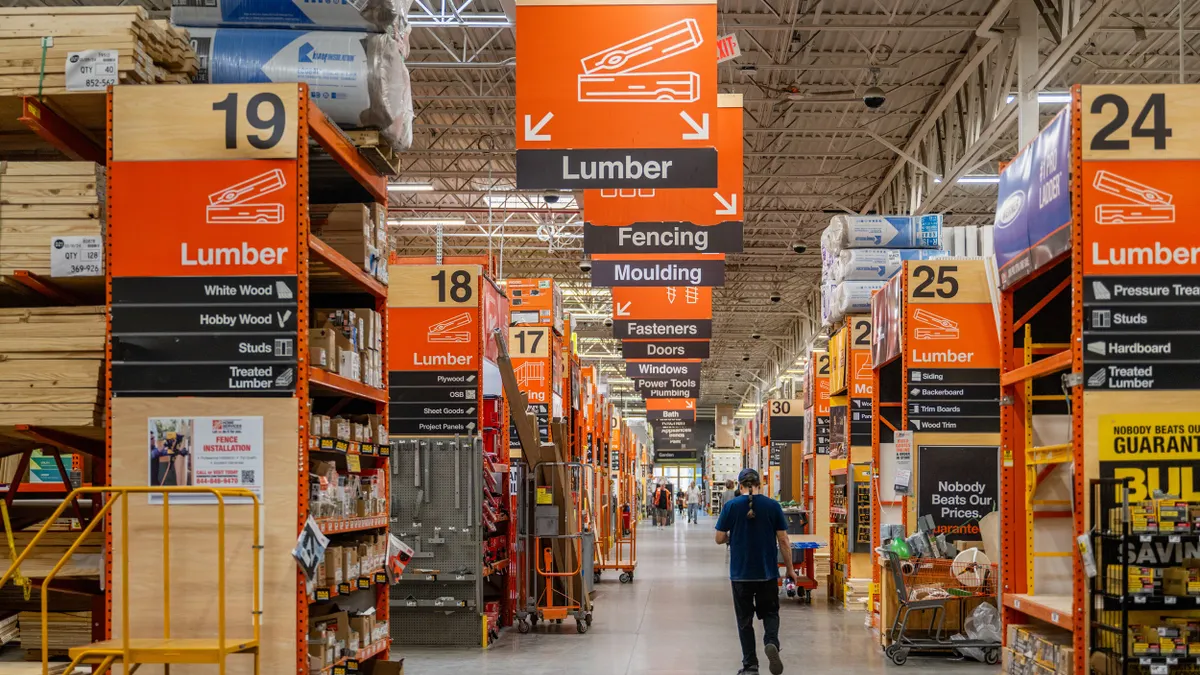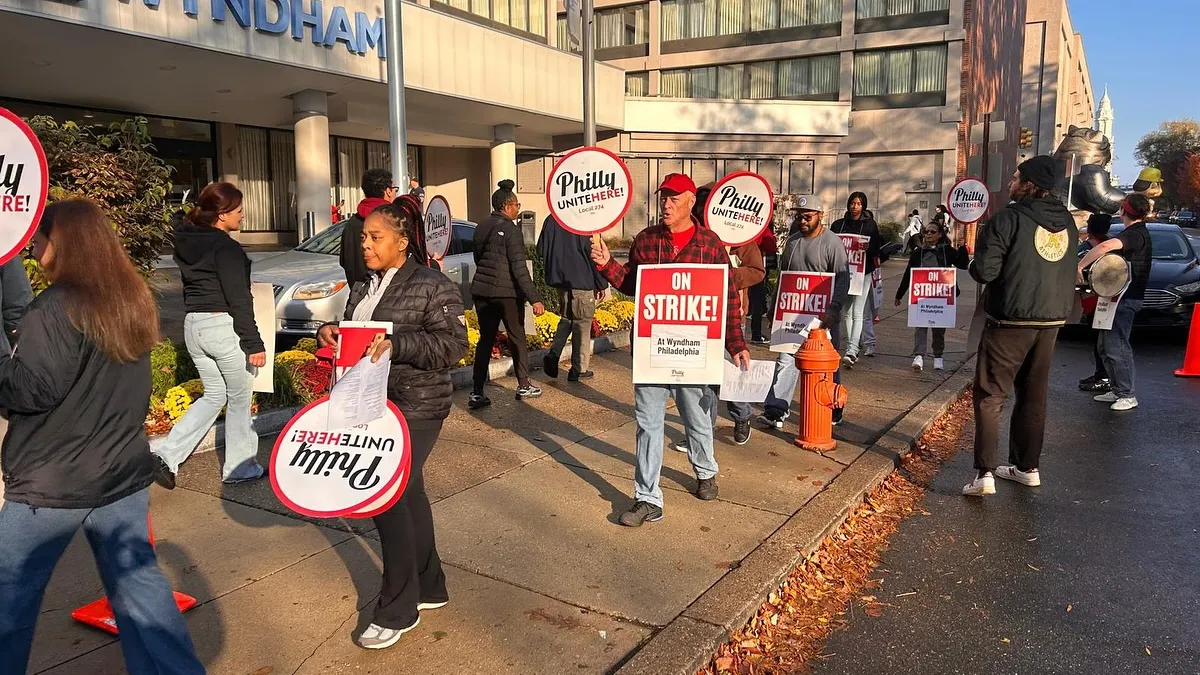As retailers expand deal days throughout the holiday shopping season, customer expectations for Black Friday, the year’s biggest shopping holiday, are changing, too
The push for a longer holiday season was accelerated by the COVID-19 pandemic, according to Dave Bruno, director of retail industry insights at Aptos. As shoppers became crowd adverse, retailers responded by stringing out discounts across the season, and customer service no longer had to go out the window during the Black Friday rush.
“Everything is less bottlenecked around a certain time of day, either Thanksgiving night or Friday morning,” Bruno told CX Dive. “When you lose that bottleneck, customer expectations gradually start to rise. The days of ‘just get out of my way, give me my television and get me out in less than half an hour and I'm going to be happy’ are mostly gone.”
The fact that there are five fewer days between Black Friday and Christmas in 2024 than 2023 has only exacerbated this trend — many customers started shopping early to ensure they finish in time. However, the National Retail Federation still expects Black Friday to be the busiest day of the year.
The result of a slightly calmer, but still busy, Black Friday is that retailers benefit from maintaining their usual CX standards. Through a combination of inventory management, associate support and consistency, retailers can create experiences that stand out, offering stressed-out shoppers a pleasant sense of normalcy.
The intersection of CX and inventory
Shoppers are still feeling the pressure even if Black Friday is no longer the doorbuster deal rush it once was. Customers who are out and about on the busiest day of the year have specific goals in mind, and this turns inventory into a significant CX concern.
Customers love purchasing difficult-to-find items in person, according to customer experience expert and author Shep Hyken. But shoppers who visit a store for an item only to find it out of stock will leave with a negative opinion.
“I am making a trip and dealing with the traffic, the parking lot, the entrance into a mall or a store, going through the aisles with lots of people," Hyken told CX Dive. "Am I going to get the result that I want?”
The connection between inventory and CX starts at the very beginning of the customer journey, according to Bruno. Retailers need to anticipate the most sought-after items for the season and have plenty on hand for any customers who want one.
“I know that doesn't sound like customer experience to you, but that's the entry point into customer experience,” Bruno said. “If I don't have the products that customers think they want, or don't think they want but surprise them, then I'll never get them in the door.”
Retailers like Costco let shoppers see inventory levels at specific stores, according to Hyken. This helps customers plan their trips, minimizing their chance of disappointment while building loyalty with the retailer.
However, hiccups happen. People tend to have a slightly higher tolerance for product shortages on Black Friday, and retailers can salvage the experience by offering alternatives.
Examples include offering free next-day delivery or reserving the product at a nearby store, according to Bruno. Customers can be flexible as long as they can still get what they need with minimal friction.
Flexibility makes the front line work
Frontline staff are the heart of the retail experience year-round, and Black Friday isn’t any different. Having the right number of flexible workers available throughout the day can help ensure the day goes smoothly.
“You want to deliver the experience that people are typically used to, and there's only one way to do that — and that is to ramp up staff properly and make sure people are trained properly,” Hyken said.
Getting staffing right involves a certain level of brute force — that is, pay, according to Bruno. The more a store can invest in its payroll, the better customer service it can offer. However this approach gets expensive in a hurry, and the costs can easily outweigh the returns.
Stores can use prior data to ensure they have staffing at the right level to handle the crowds, according to Hyken. While information from prior Black Fridays won’t be perfectly accurate, it can help paint a picture.
Role flexibility is key as well. At certain points the return counter may be inundated, at others there may be a massive line at the register, and no amount of data can help a store know where its customer service efforts need to be focused at a specific time.
The trick is to ensure your staff can work multiple jobs, according to Bruno. Cashiers should be capable of helping customers on the floor or helping keep shelves stocked, and sales people should also know how to work the register when the time comes.
Technology has a role to play, too, according to Bruno. Workforce management software can help perfect staffing levels, while mobile tools allow associates to literally meet customers where they are.
“The rules of day-to-day retail aren't suspended anymore,” Bruno said. “So you have to have sales associates, store associates, cashiers — whatever your business model is — that are empowered to help people complete their shopping journeys however they expect or need their shopping journeys to be completed.”
Managers are the glue that will hold the entire Black Friday experience together, according to Bruno. They need to spend the day walking the store, not hiding in the back room, and they need to be as versatile as any associate, observing the flow of operations and adjusting their strategy as needed.
Consistency is king
Retailers have the opportunity to use the upcoming Black Friday as the foundation to build long-term relationships with customers. They can achieve this by offering stability during a chaotic time of the year.
This year’s Black Friday is unique in that it comes shortly after a contentious election cycle. Consumers may be feeling on edge regardless of how they feel about the final outcome of the vote, according to Hyken.
As a result, they’re likely to appreciate a brand that offers a consistent, reliable experience even on a hectic shopping holiday. Maintaining the same journey customers expect will go a long way toward growing loyalty, while an unexpectedly poor experience could leave a bigger negative impact than usual.
“Give them what they've always depended on when doing business with you,” Hyken said. “They know what to expect, and if it's been a good experience and they can depend on that good experience, it'll make them feel good.”
On the other hand, unpleasant surprises can chip away at hard-earned loyalty.
Consistency should be maintained across channels as well, according to Bruno. This includes ensuring prices are the same online and in store, and that services like buy online, return in-store will still be honored even on the busiest day of the year.
“Do not disappoint me if you promise me something,” Bruno said. “Tolerance for mistakes is higher, but not high.”


